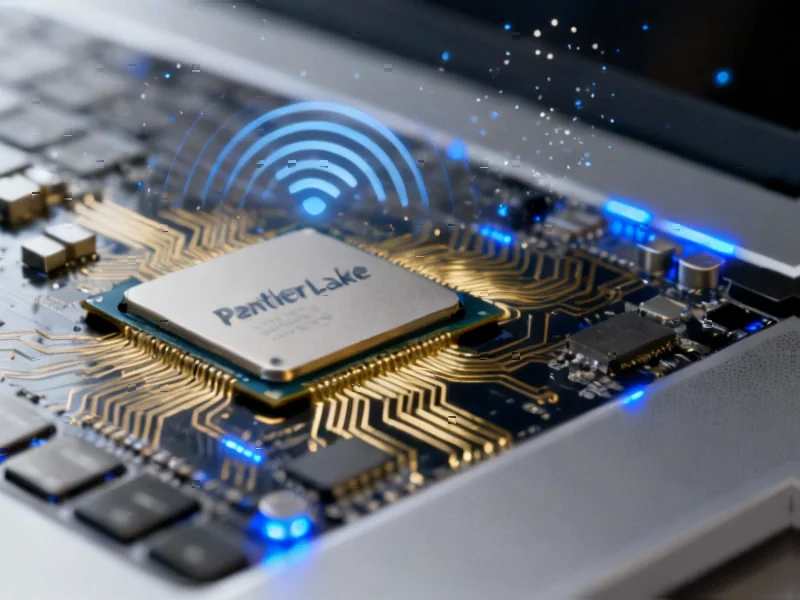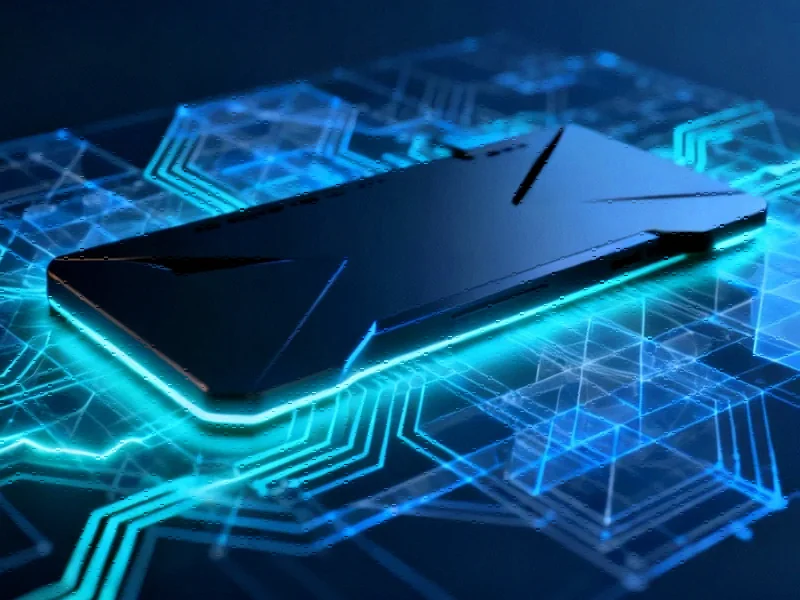Unveiling Panther Lake’s Under-the-Radar Innovations
While much of the attention around Intel’s upcoming Panther Lake processors has focused on raw performance metrics and battery efficiency, the most transformative upgrades might be the ones receiving less fanfare. At Intel’s Tech Tour 2025 in Arizona, the company demonstrated how Panther Lake’s advancements in wireless connectivity and gaming technology could fundamentally change the user experience when these chips arrive in laptops early next year.
Table of Contents
Wireless Connectivity: The Unsung Hero
What initially seemed like routine connectivity upgrades revealed themselves as potential game-changers during Intel’s demonstrations. Panther Lake introduces comprehensive support for the 6GHz band, representing a significant leap forward from current standards. According to Intel’s technical specifications, the 6GHz band delivers twice the speed of conventional 5GHz channels with a substantially wider bandwidth spectrum up to 1,200 MHz.
The real breakthrough comes through Panther Lake’s implementation of Wi-Fi 7’s flagship Multi-Link Operation (MLO) capability. This intelligent technology enables devices to maintain simultaneous connections across multiple frequency bands, automatically switching between channels to ensure optimal performance. Imagine transferring large video files while other household devices congest the 5GHz band – MLO would seamlessly transition your connection to the less-crowded 6GHz spectrum without any user intervention.
Perhaps even more impressive is Panther Lake’s support for Wi-Fi 7 Release 2 (R2) with Multi-Link Configuration. This advanced feature allows access points to detect underutilized Wi-Fi channels and consolidate client devices onto fewer bands, automatically shutting down redundant channels to conserve energy. For enterprise environments and power-conscious users, this represents a meaningful step toward more sustainable computing., as as previously reported, according to additional coverage
Gaming Performance: Beyond Raw Numbers
Panther Lake’s gaming capabilities showcase Intel’s refined approach to graphical performance. The new Xe3 GPU architecture delivers substantial improvements over its predecessor, featuring 25% more threads, upgraded 12-bit vector engines, and enhanced ray tracing units. As Intel Fellow Tom Peterson emphasized during the gaming technology session, “These micro-architectural improvements translate into real-world performance.”
The numbers speak for themselves: Intel’s early benchmarks show Panther Lake rendering frames in just 22.84 milliseconds compared to 45.44 milliseconds on the previous Lunar Lake architecture. This dramatic improvement stems from precise optimizations including a larger L1 cache and sophisticated variable register allocation., according to expert analysis
Where Panther Lake truly innovates is through its XeSS Multi-Frame Generation (MFG) technology. This software advancement creates a base image using traditional rasterization techniques, then employs AI to generate up to three additional frames per native frame. The result is exceptionally smooth gameplay that feels significantly faster than the native frame rate would suggest.
During live demonstrations, Panther Lake ran “Dying Light: The Beast” at approximately 30 FPS natively, but thanks to XeSS MFG, the perceived frame rate exceeded 130 FPS. The technology maintained consistently smooth performance without screen tearing or graphical artifacts, suggesting Intel has made substantial progress in competing with established gaming hardware manufacturers.
Industrial and Enterprise Implications
While consumer benefits are immediately apparent, Panther Lake’s advancements carry significant implications for industrial computing applications. The improved connectivity ensures more reliable wireless performance in crowded industrial environments, while the energy-efficient Wi-Fi 7 R2 capabilities could substantially reduce power consumption across large-scale deployments.
The gaming enhancements also translate to professional visualization applications. The Xe3 architecture’s improved ray tracing and AI-powered frame generation could benefit CAD/CAM applications, architectural visualization, and medical imaging where smooth rendering and accurate lighting are critical.
Looking Ahead
The first laptops featuring Panther Lake processors are scheduled to arrive in early 2026, giving manufacturers and developers time to optimize for these new capabilities. While questions remain about how Intel’s advancements will stack up against competing architectures, the under-the-radar improvements in connectivity and intelligent performance optimization suggest Panther Lake could represent a more significant evolution than initial specifications might indicate.
For industrial computing professionals, these developments warrant close attention as they plan future deployments and upgrades. The combination of advanced connectivity, energy efficiency, and enhanced graphical capabilities positions Panther Lake as a potentially transformative platform across multiple computing segments.
Related Articles You May Find Interesting
- US Weighs Software-Based Export Restrictions on China in Escalating Tech War
- Beyond the Wrist: How Next-Gen Wearable Sensors Are Revolutionizing Cardiovascul
- Galactic Center’s Gamma-Ray Mystery Deepens as Dark Matter and Pulsars Compete f
- Navigating Post-De Minimis Customs: How Major Carriers Manage Import Delays and
- Google Fi Enhances Mobile Experience With AI Call Filtering and Cross-Device Syn
References & Further Reading
This article draws from multiple authoritative sources. For more information, please consult:
This article aggregates information from publicly available sources. All trademarks and copyrights belong to their respective owners.
Note: Featured image is for illustrative purposes only and does not represent any specific product, service, or entity mentioned in this article.



